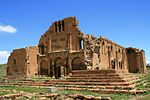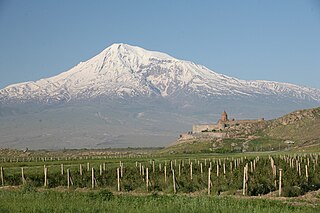The United Nations Educational, Scientific and Cultural Organization (UNESCO) designates World Heritage Sites of outstanding universal value to cultural or natural heritage which have been nominated by countries which are signatories to the UNESCO World Heritage Convention, established in 1972. [1] Cultural heritage consists of monuments (such as architectural works, monumental sculptures, or inscriptions), groups of buildings, and sites (including archaeological sites). Natural features (consisting of physical and biological formations), geological and physiographical formations (including habitats of threatened species of animals and plants), and natural sites which are important from the point of view of science, conservation or natural beauty, are defined as natural heritage. [2] Armenia ratified the convention on 5 September 1993. [3]
Contents
Armenia has three sites on the list, all of which are monasteries, churches, or related religious sites. The first property listed in Armenia was the Haghpat Monastery, in 1996. In 2000, the site was extended to include the Sanahin Monastery. In 2000, two further properties were added, the Cathedral and Churches of Echmiatsin together with the archaeological site of Zvartnots, and the Monastery of Geghard and the Upper Azat Valley. All three sites are of the cultural type. There are additional four sites on the tentative list. [3]















